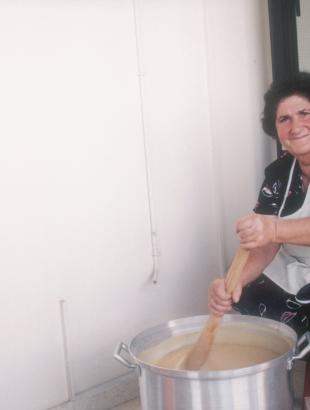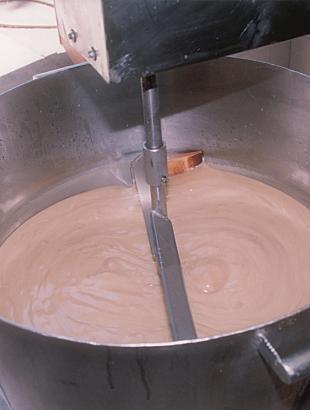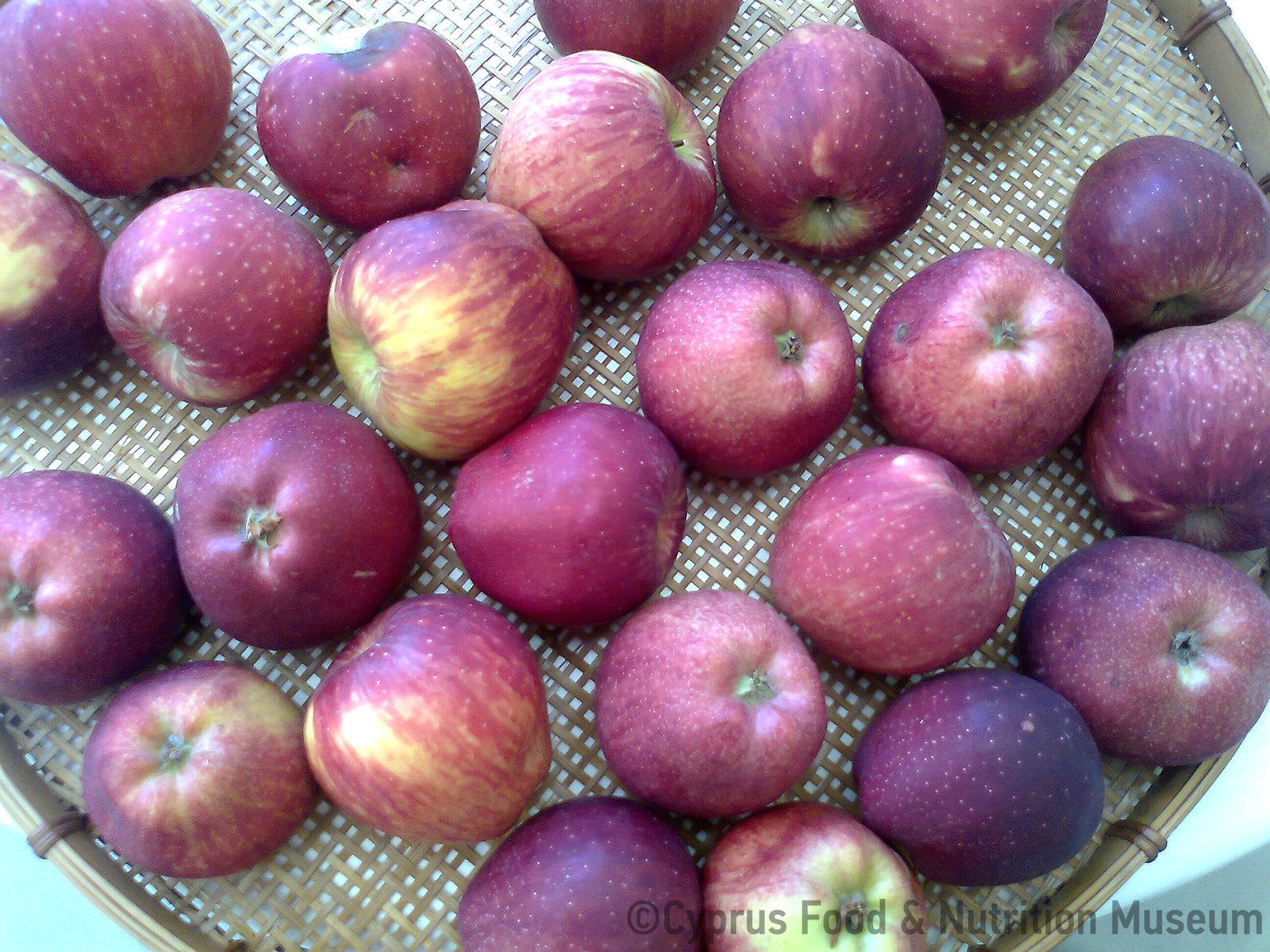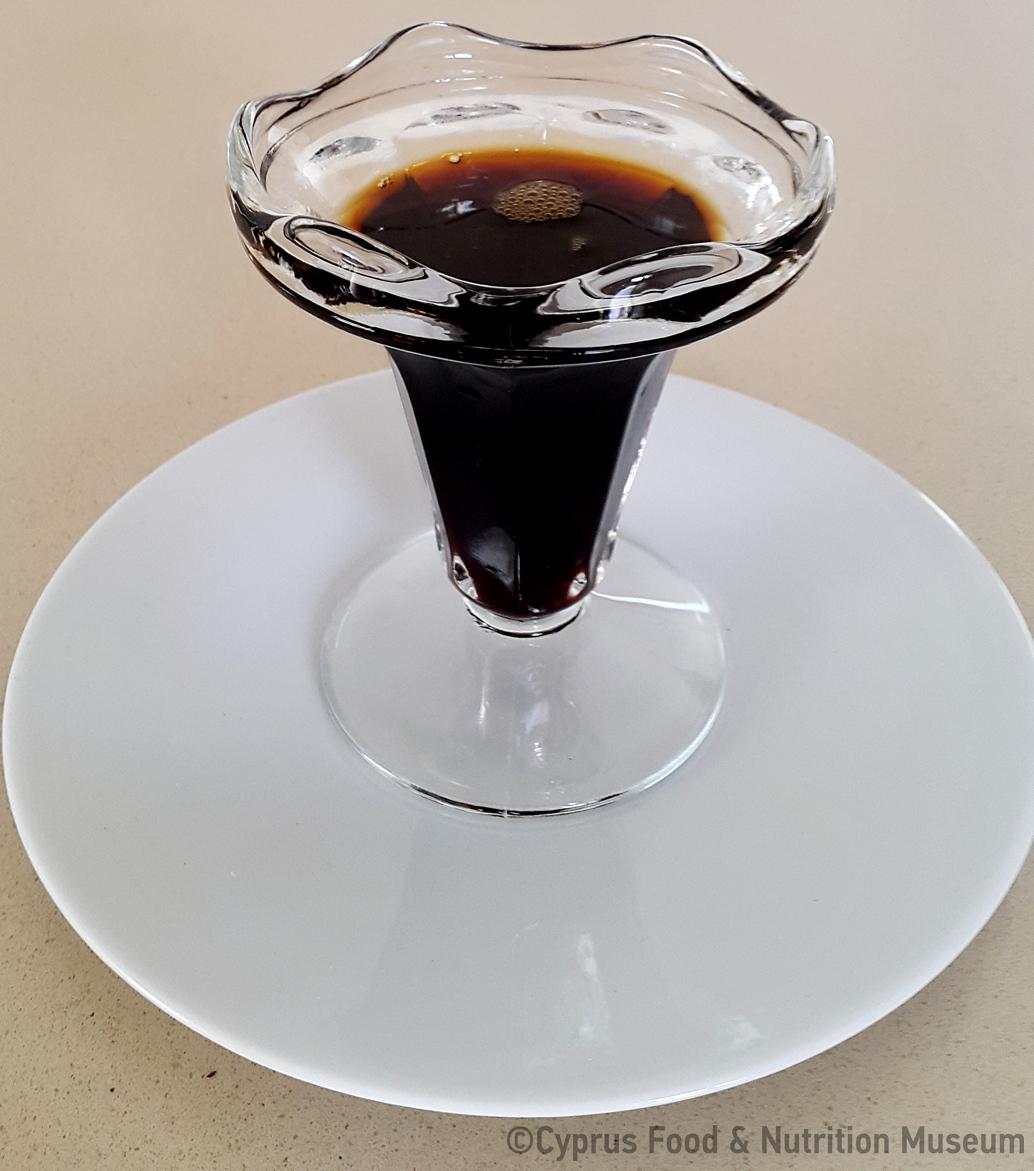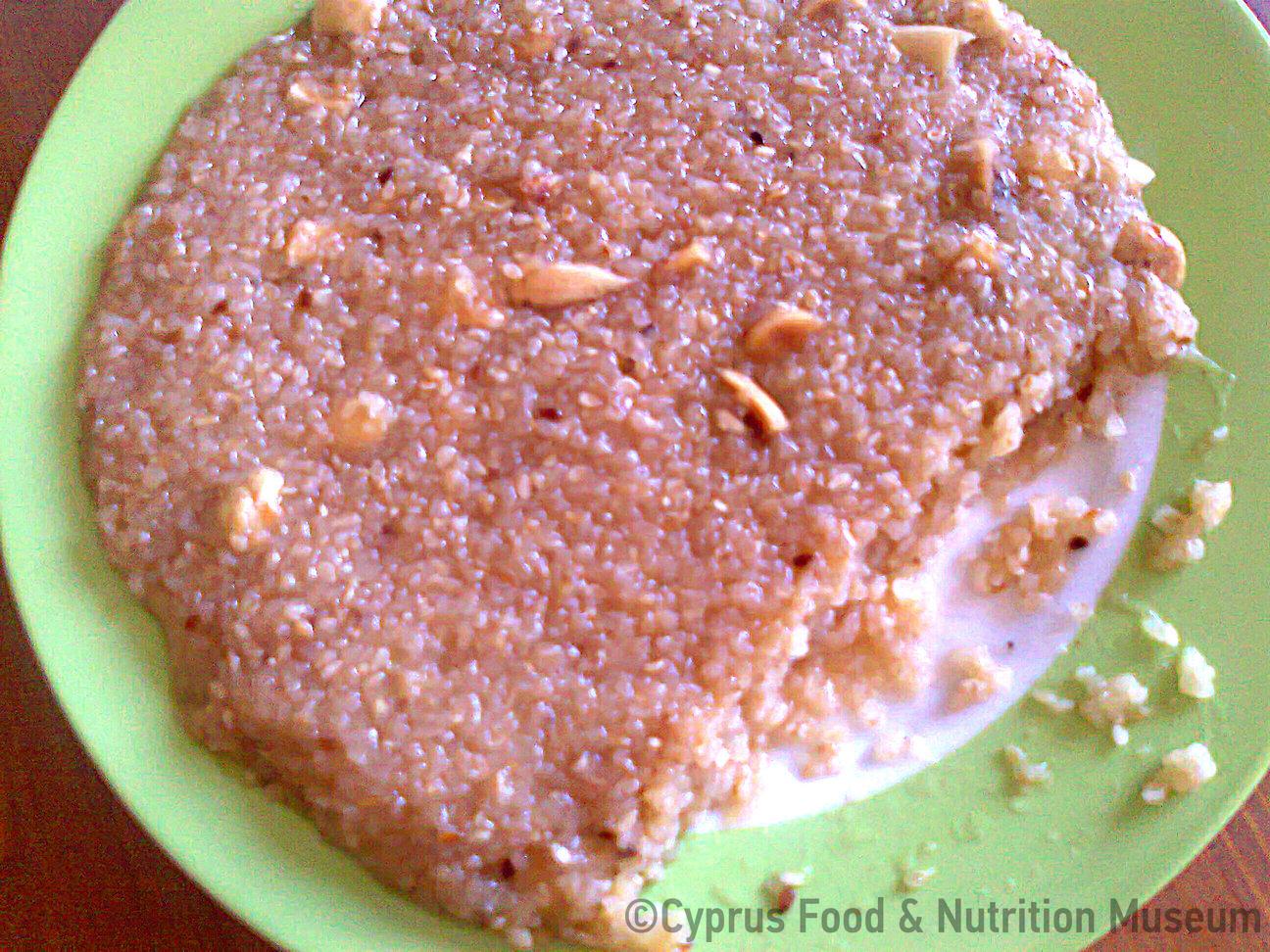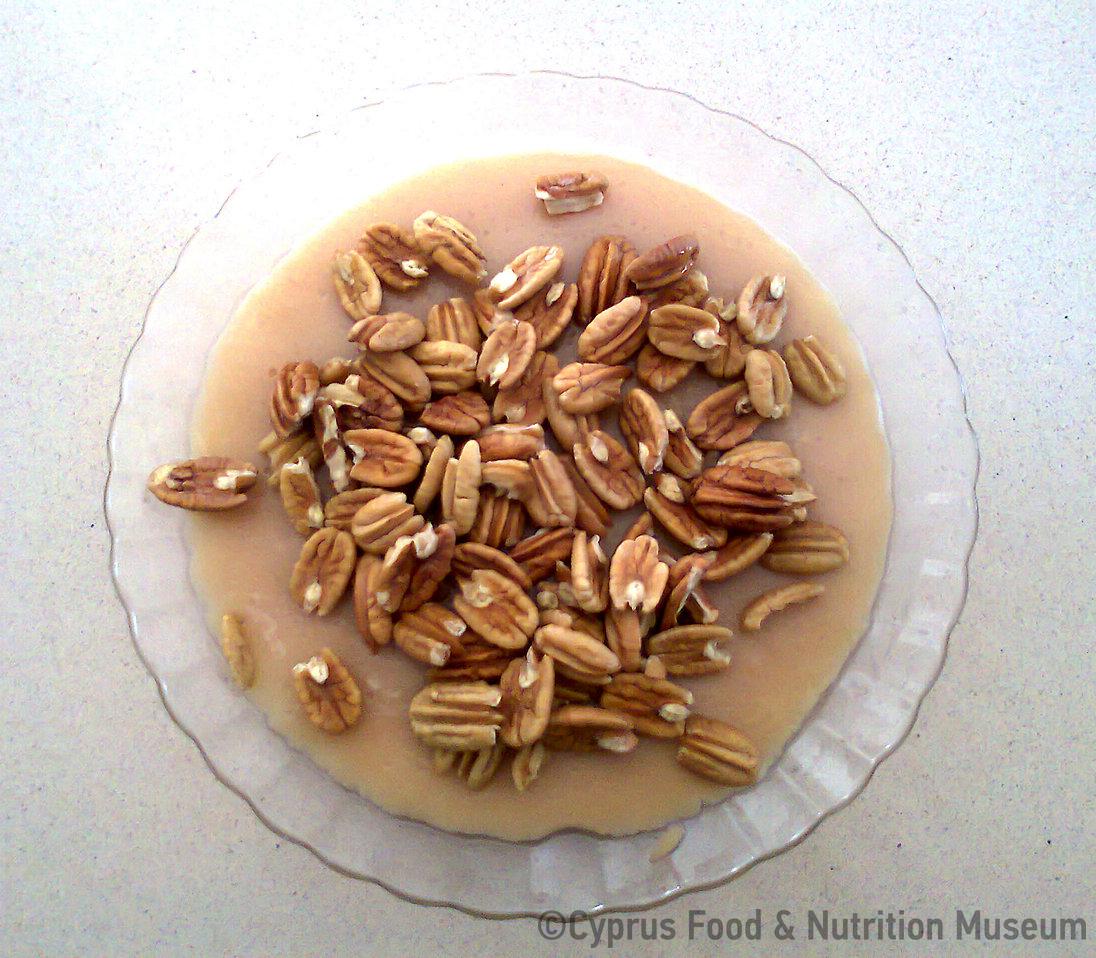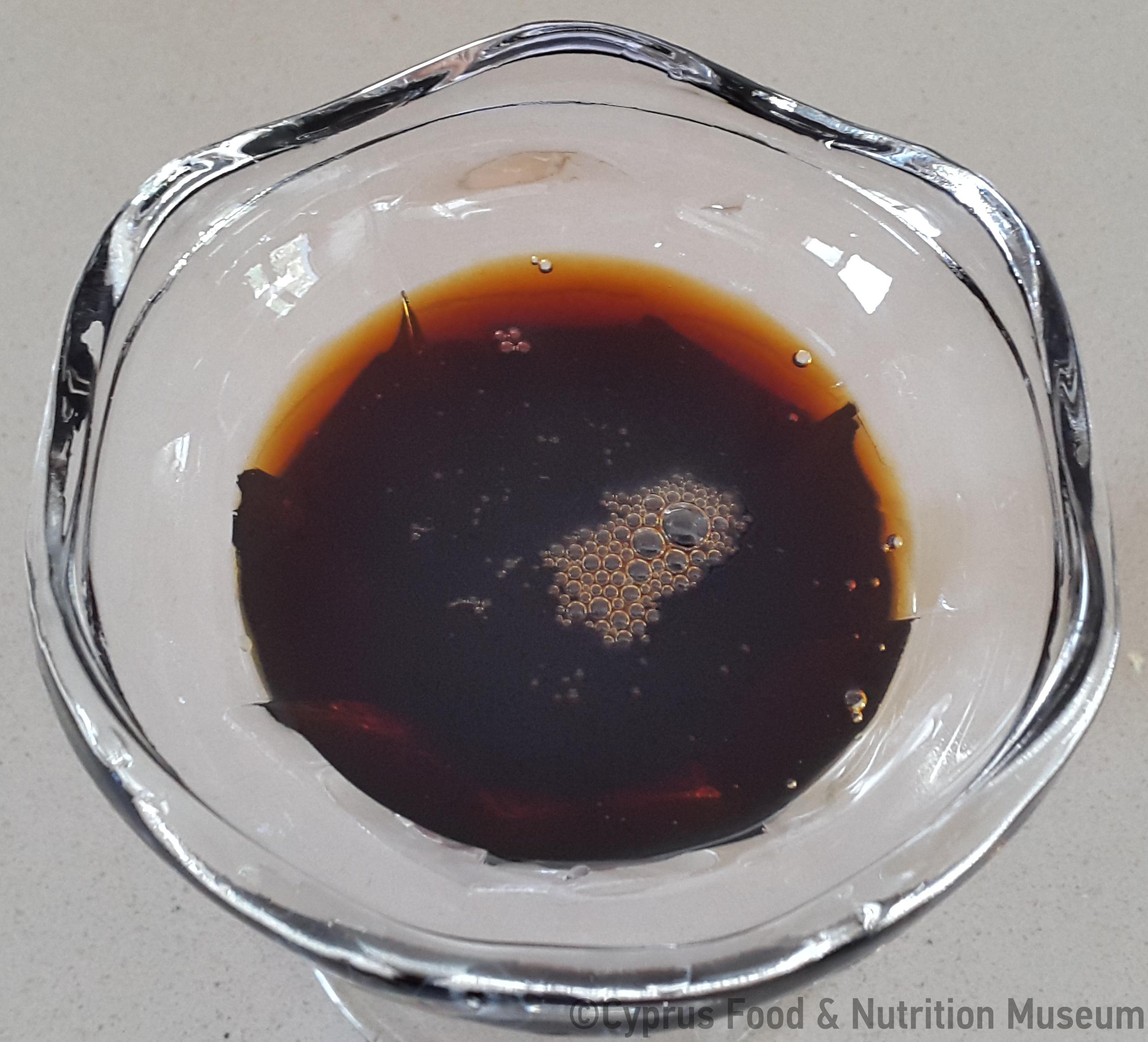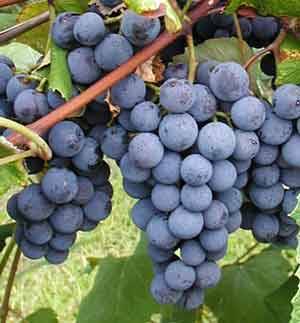Name - Origin
Μουσταλευριά.
A thin cream made from grape must (Yangoullis 2009, entry ππαλουζέ,η - ππαλουζές,ο, 390). It is a sweet made from grape must (gléfko) in a creamy form. It is also the sweet pulp which is used to make soutz̆oukkos (Kypri 1983 [2003²], entry ππαλουζές,ο, 93).
ETYM. < turk. palûze pālūda (Yangoullis 2009, entry ππαλουζέ,η - ππαλουζές,ο, 390) [λευκοφάγος-lefkofágos] (Petrou-Poeitou 2013, entry Παλουζές, 107)
The earliest name of ppalouzes is "nisiastí". It is still called so today by some people (Kyprianou 1974, 300).
See entry Ppalouzes in the Traditional Recipes section.
Functional and symbolic role
It is consumed fresh like any cream. Ppalouzes can be dried in the sun, cut into small rectangular/square-shaped pieces, which are called kkioftérka (Kypri 1983 [2003²], entry ππαλουζές,ο, 93).
Additional information and bibliography
Ioannis Ionas, in his «Παραδοσιακά επαγγέλματα της Κύπρου» (Traditional trades of Cyprus), notes the following about ppalouzes, kkiofterka and soutz̆oukkos: "After pressing the grapes, the juice was filtered through a thinly woven cloth. The juice was then put into the hartz̆in (big pot) to boil over a fire. In order to clean the must, two handfuls of ash or powdered white chalk (from Paphos) passed through the tats̆ia (fine sieve) had to be added to the pot before bringing the juice to a boil. As the mixture was boiling, the foam that would rise to the surface would be collected with a ladle (or a piece of pine twig towards the end). After boiling and clarifying for 1-1½ hours, the juice was glossy (golden brown in colour) and had to be removed from the heat. If ash had been used in the preparation, ppalouzes would have a dark colour and could even smell; therefore, white chalk was preferable to ash. As the mixture was boiling, the foam that would rise to the surface would be collected with a ladle (or a piece of pine twig towards the end). After boiling and clarifying for 1-1½ hours, the juice was glossy (golden brown in colour) and had to be removed from the heat. If ash had been used in the preparation, ppalouzes would have a dark colour and could even smell; so, white chalk was preferable to ash. After the juice had cooled down (probably on the following day) the pot was placed again over a fire and flour was gradually added while stirring. The amount of flour added was relative to the amount of grape juice used: usually, for each kouza (clay jar) of juice, usually an oka of flour would be added. The juice would be constantly stirred over heat until the water had been absorbed or had evaporated and then a bit of rose water would be added for a nice smell. This mixture would either be served as ppalouzes, sprinkled with a few ground almonds or turned into kiofterka/soutz̆oukkos.
Hampis Christodoulou Nyssis (born in 1898 in Lemythou, Folklore Archive T. 566) states: Out of grape juice we make epsima and from that we make soutžoukko and kkiofterka. Portós is consumed in winter and is made by coarsely grinding roasted wheat using a hand-mill, and then adding it to the grape must and bringing the mixture a boil. When it is ready, it is transferred to a koumnin [koumnin = open-necked pitcher]. Sesame seeds are roasted and a small amount is stirred in the mixture. Kaïkanás is made with epsima (grape syrup), figs and flour that has been fried beforehand in mavrólado (mavrolado=olive oil derived from boiled olives when squeezed with one's fingers). S̆ouroupéttin is a refreshing drink made with epsima which is diluted with water. Kremmastarkés are bunches of very ripe white and red grapes, hung for a while and then consumed fresh - they are refreshing, they are consumed in May. Máts̆es are the low quality grapes (Ionas, 2001 pp.103-106).
Yangoullis K. G. (2009), Θησαυρός Κυπριακής Διαλέκτου. Ερμηνευτικό, Ετυμολογικό, Φρασεολογικό και Ονοματολογικό Λεξικό της Μεσαιωνικής και Νεότερης Κυπριακής Διαλέκτου, Βιβλιοθήκη Κυπρίων Λαϊκών Ποιητών, 70, Theopress Publications, Nicosia.
Kypri Th. D. (ed.) (1983 [2003²]), Υλικά διά την σύνταξιν ιστορικού λεξικού της κυπριακής διαλέκτου, Μέρος Β΄, Γλωσσάριον Ξενοφώντος Π. Φαρμακίδου, Publications of the Centre for Scientific Research, IX, Nicosia.
Ionas, I. (2001). Παραδοσιακά επαγγέλματα της Κύπρου (Publications of the Centre for Scientific Research XXXVII), Centre for Scientific Research, Nicosia.
Kyprianou X. S. (1974), «Τροφαί του χωριού Τσακκίστρα της Κύπρου», Λαογραφία ΚΘ΄ (XXIX), Athens, pp.295-310.
Petrou-Poeitou E. (2013), Από πού κρατάει η σκούφια τους. Λέξεις και ιστορίες από τον κόσμο της γεύσης, Epiphaniou Publications, Nicosia.
Stalo Lazarou, Varvara Yangou, Demetra Demetriou, Tonia Ioakim, Argyro Xenophontos
